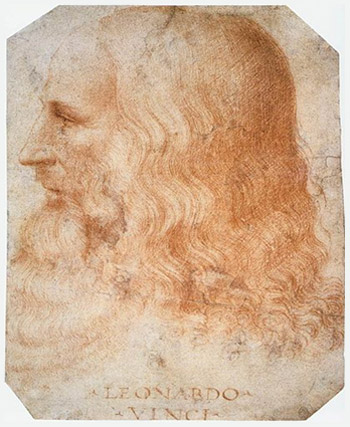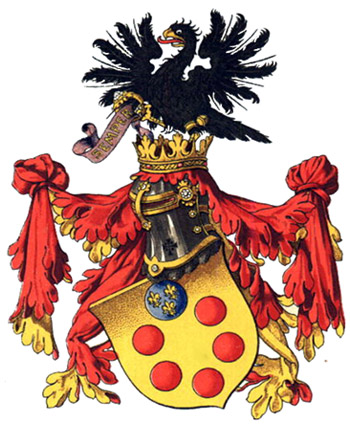The era shifts to the arts and literature of ancient Greece and Rome. Creativity and imagination bring achievements. Humanist scholars concerned about mankind are exalted. Painters begin to use worldly images in their work. Literacy among the secular world begins when the printing press is invented in Europe in the 15th century. North America is a beneficiary. See the recreated Gutenberg printing press at The International Printing Museum.
Leonardo da Vinci (1452 - 1519) was born near Florence, in Vinci, Italy. His thoughts and observations on techniques of drawing and painting can be read in an unedited translation of A Treatise on Painting. Credit is also bestowed upon him for the parachute, helicopter, and the tank.
An introduction from Lorenzo de Medici leads to work as a painter and engineer for a royal in Milan until he falls from power.
As the guest of the brother of Pope Leo X, second son of Lorenzo "the Magnificent," de Medici, of Florence, Da Vinci enjoys the use of an apartment in the Palace of Belvedere in the Vatican.
There Leonardo meets Francois I, King of France. Of all things, he accepts a commission to build a mechanical lion for Francois' amusement. The king's hospitality extends to an invitation to live in his grand manor house in Saint-Hubert, until his death. This image is a recreation of the Da Vinci's mechanical lion 500 years later.
Rather than model the clean-shaven face of his peers, in their long robes, the social butterfly prefers a beard and Tunic worn by younger men.

Italian, High Renaissance period (c.1490 - 1530) packs a lot of history in a short period of time.
The intrigue that swirled around Lorenzo “the Magnificent” and Savonarola before their death is in the past, but a relic survives—the Coat of Arms of the House of de Medici.
Rome replaces Florence as the center of artistic patronage. Venice becomes the other leading center for artists. New skills and styles of painting appear. The Mona Lisa portrait is synonymous with High Renaissance in Italy.
Notice La Giocondo is not wearing jewelry. Women were only allowed to wear their bridal clothing and accessories for a short period after marriage. Italian governments formed laws to control showy, public displays of wealth and personal conduct in religious and moral spheres.
“Renaissance Man,” is a term coined in the 15th century by Alberti, an Italian Humanist author. He said, “A man can do all things if he will.” This is the basis of Renaissance Humanism in which man is considered the center of the universe, and limitless in his capacity for development. Da Vinci personifies the phrase, to this day.
Go on to Describe, Analyze, Interpret & Conclude. Contact me for help.

The Mona Lisa (c.1503 – 06. Poplar wood. 30 x 21 in. (0.77 x 0.53 cm.) painting is a commission from Francesco del Giocondo a Florentine silk merchant. It is a gift for his wife following the birth of their second child. Strangely, the painting is never delivered. After Leonardo's death, The Mona Lisa has many homes until she finally settles in the Louvre.
They say, "What a pity the varnish ages: the sleeves were once bright, saffron yellow." For a view of the painting on the wall, the Louvre Museum Gallery offers you A Proper Look at The Mona Lisa. (Mona is the standard Italian contraction for Madonna, or "My Lady")
One of Leonardo's signature techniques, Sfumato, describes his seamless blending of smoky tones to suggest peering through a lens smeared with the finest olive oil. An imaginary "Golden Triangle" frames The Mona Lisa within a geometric shape reminiscent of Egyptian pyramids, often associated with da Vinci's work.
More to come about the importance of the "Golden Triangle" in paintings.
Immense attention is drawn to The Mona Lisa when the painting goes missing in 1911. Two years later, an employee is charged with the theft. In the Western world of visual art, The Mona Lisa is, perhaps, the most famous, and the French Government is the proud owner.